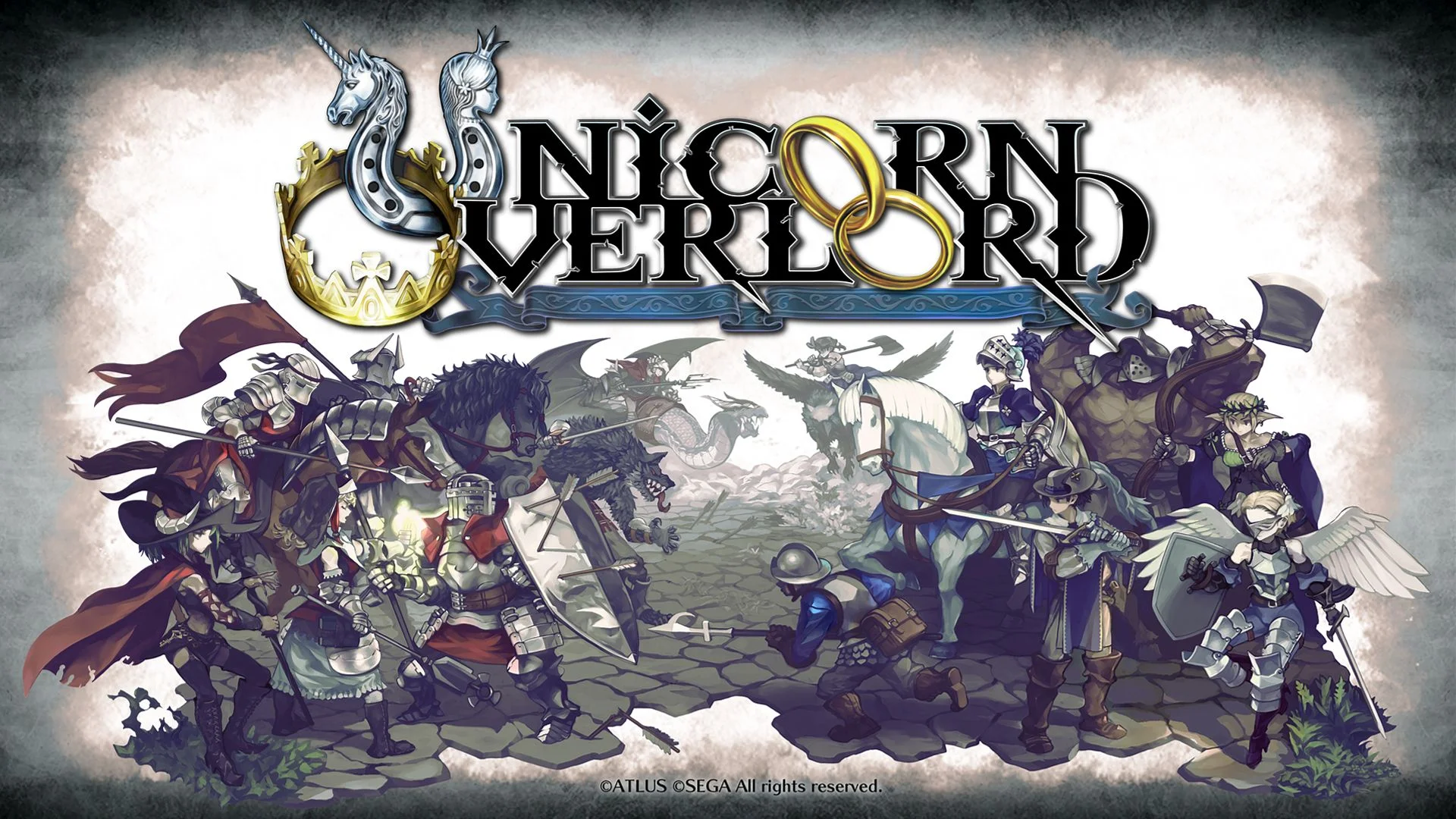Unicorn Overlord
Developer: Vanillaware
Publisher: Atlus
Platforms: PlayStation 5, PlayStation 4, Switch, Xbox Series X/S (Reviewed)
Release Date: Available Now
Price: $59.99 USD – Available Here $99.95 AUD – Available Here
Overview
When it comes to Vanillaware it is hard to go wrong. The developer has built up quite a reputation throughout the years of creating amazing looking games with their unique art style and generally accompanying it with either an amazing storyline or gameplay, but rarely both in one package. Now, with it being five years since their last fully original game and a couple years since their last remaster, Vanillaware has returned with Atlus at the helm once again to bring us back to the medieval fantasy realm with Unicorn Overlord. The last time Vanillaware tapped into this style was with Dragon’s Crown and but with Unicorn Overlord taking a far different approach to gameplay, is this once again a success for the storied developer?
Story
The Kingdom of Cornia is a prosperous one with a beloved Queen and loyal subjects, which makes the sudden betrayal of lead General Valmore all the more shocking, let alone the fact that nearly the entire Cornian army has joined his side. The Queen, in a last ditch effort to save her bloodline and rescue her son, sends him away under the guard of her most trusted knight while also giving the young prince Alain the Ring of the Unicorn, the kingdom’s treasure and symbol of Cornian royalty. As her son escapes, the Queen makes a valiant last stand to buy time. Nearly a decade passes as Alain trains in an isolated island with a few close allies all while Valmore, who now calls himself Galerius, has formed the Zenoirian Empire and has swept through the land, crushing any that stand against him and bringing the entire continent of Fervith under his control.
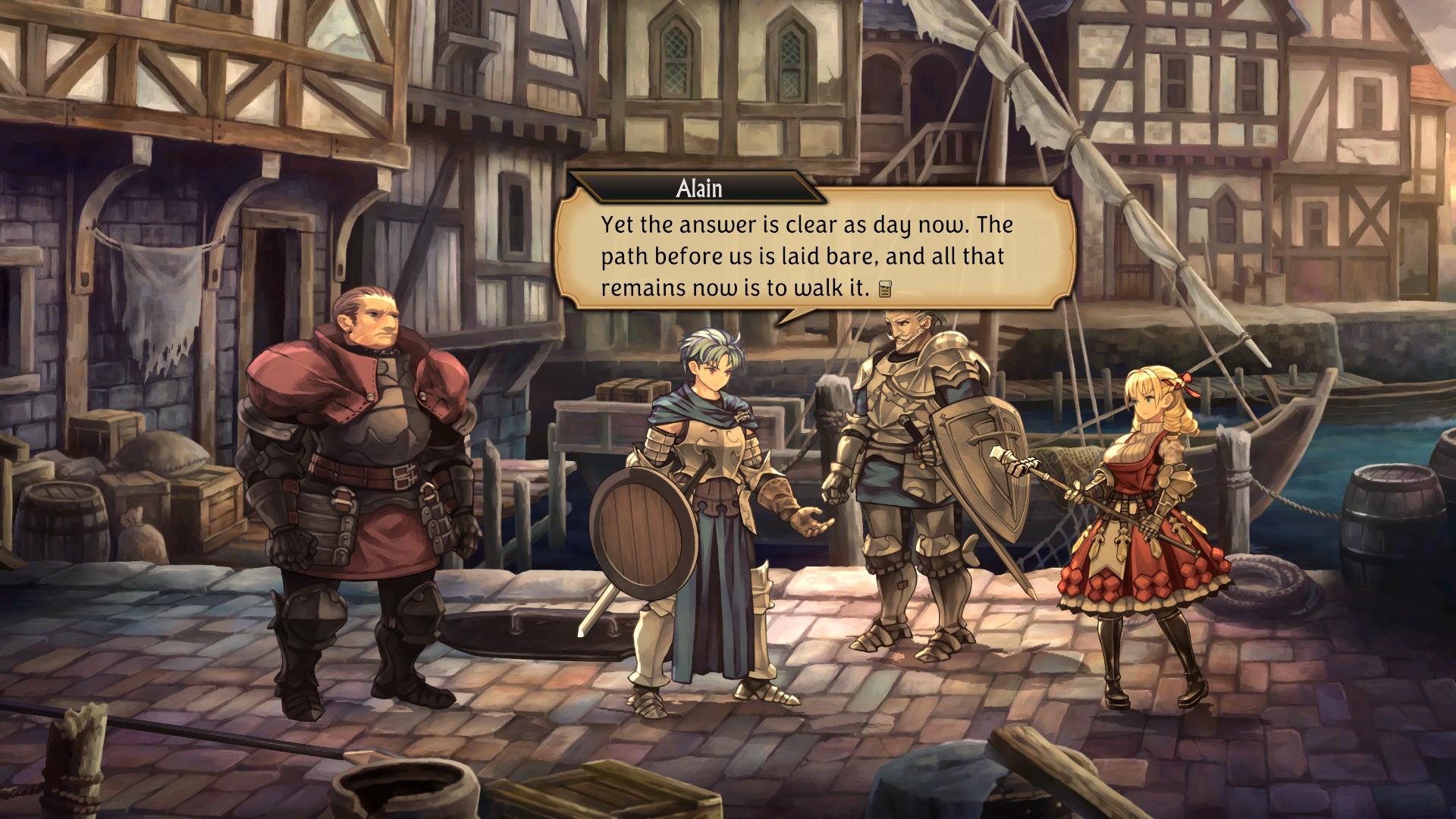
Suddenly, despite the isolation that comes from living on a far off island, a ship containing Zenoiran forces appears and forces Alain and his allies into action but this battle reveals not just one but two surprising elements. Not only are Alain and his fellow rebels capable of standing up to the soldiers that have swept through the land, but some strange magic is afoot. When facing down against the enemy leader that invaded the island, Alain realizes that he used to be a loyal ally and hesitates to execute the foe, triggering magic within the Ring of the Unicorn and lifting the spell placed on the man. Upon realizing that this magic can seemingly control the minds of those it is used on, Alain sets out the leader of the Liberation Army to take back his land, free the five kingdoms that have fallen under Galerius’ rule, and defeat the man himself at whatever cost.
Unicorn Overlord may have plenty of style and nearly every new character you meet just oozes with it, the story itself is unfortunately on the blander side. While it does indeed tell a tale about a prince seeking revenge against his mother’s killer, all while saving the rest of the continent in the process, there are very few twists and turns along the way and what little there is isn’t unique in any manner. There are a few surprises here and there, though most of these become a little predictable but that doesn’t mean that the game’s writing can’t pull at the player’s heart strings from time to time, especially within the Elfheim and Bastorias nations, and deliver a few surprises here and there. These just come far too infrequently along the game’s nearly sixty hour runtime.
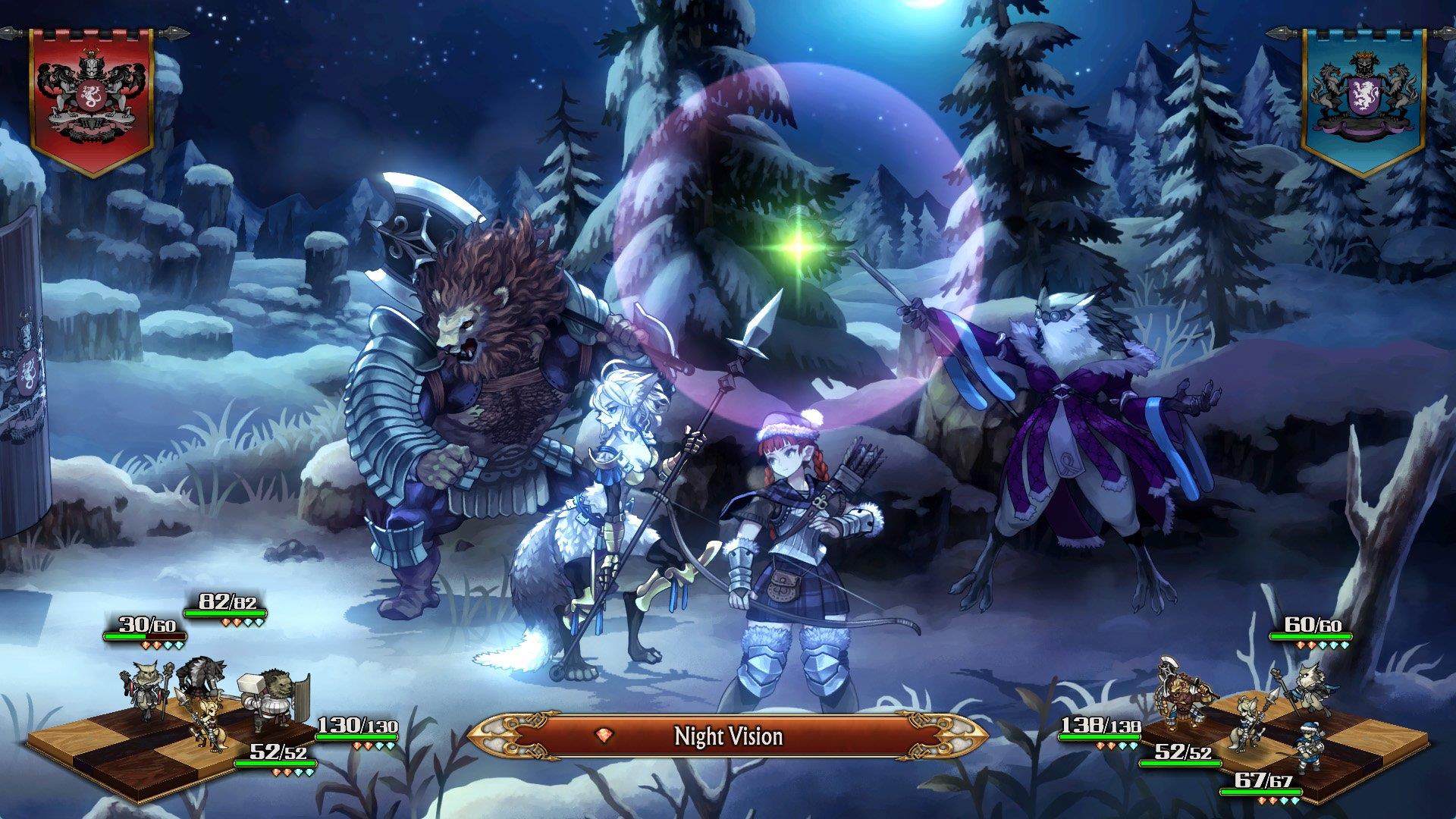
Where Unicorn Overlord’s story does shine a bit is with its characters. In a similar fashion to a certain franchise with a flaming symbol, the more units fight together the closer they will become with one another. Alain can also give gifts to units stationed at towns and have gorgeously drawn meals with their team at taverns/inns to grow closer to their party. Not every character will have a “bond’ story with another but a shockingly high number of them do and being able to see these characters talk with one another is a nice little bonus, especially since some of the interactions are quite wonderful. It is also worth noting that there is a bit of a romance element in the game, though this only comes into play in the late game. Along these same lines, Alain also has the most bond opportunities with every character and players will often be given various choices throughout the story, usually during side-quests, where they will be prompted to make either spare or execute an enemy.
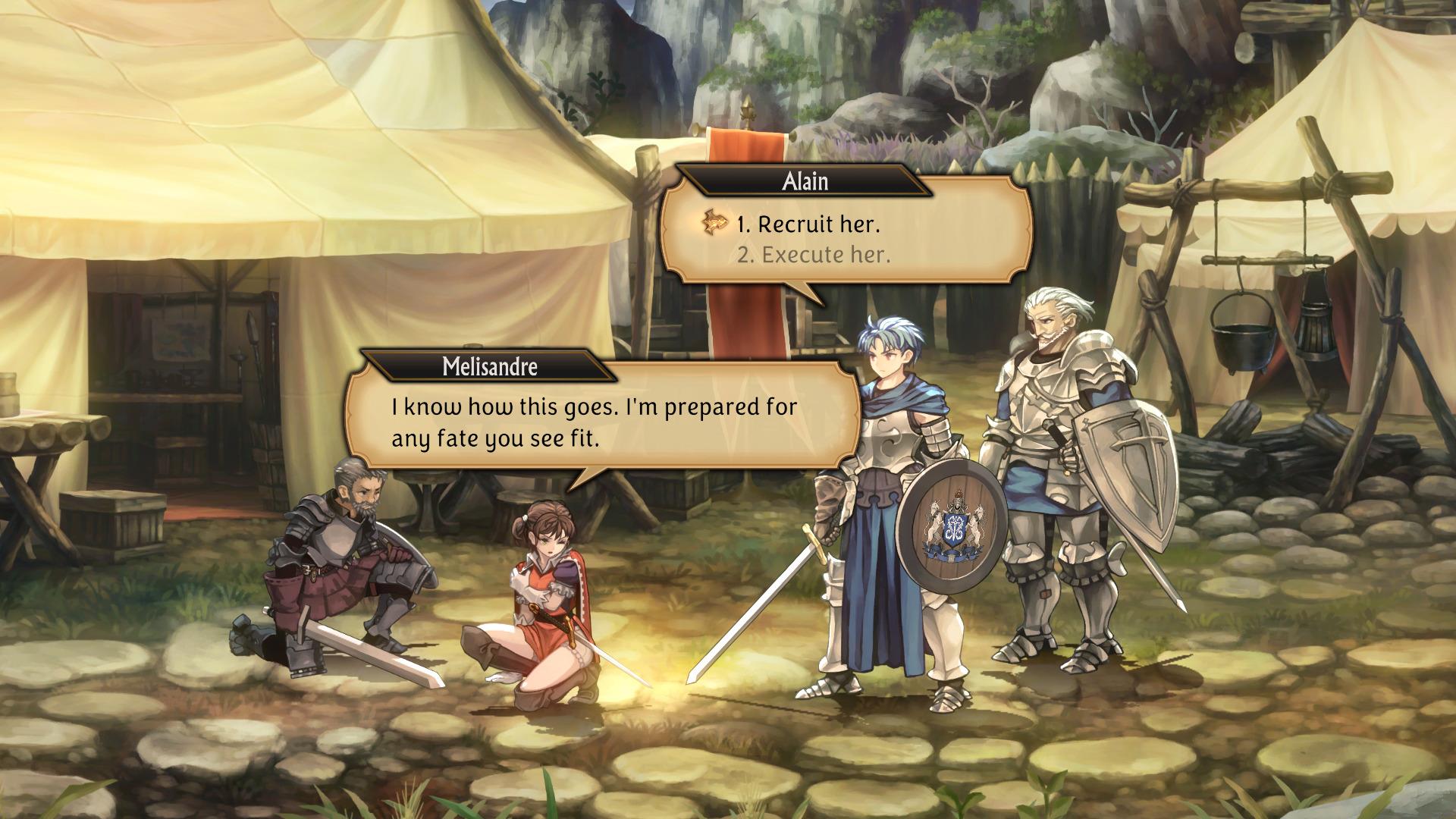
As a general rule of thumb, we tried both routes with a prior save and execution is never worth it, as players will only obtain some extra items that can generally be obtained later while sparing an enemy will almost always lead to them helping down the line. That being said, since a lot of the characters that can join Alain’s team are optional, these characters don’t get much of a chance, if any, to actually shine or even appear in the main storyline as a result of them possibly being dead or skipped over entirely should players be mainlining the story rather than fully exploring everything Unicorn Overlord has to offer.
Gameplay
Unicorn Overlord is a unique take on a strategy RPG as far as gameplay goes thanks to the fact that rather than fights breaking out against individual characters, they instead involve entire units. A lot of battles involve players needing to take to the field and defeat their targeted enemy, usually garrisoned inside of a town or fort that they need to be ousted from though the game does do a solid job varying things up from time to time, keeping things fresh. In fact there are even some “in combat” conversations that can be made between certain units and these are highlighted in the menu. Every stage has a time limit and a loss condition as well, but unless players are on the hardest difficulty this will likely not be an issue as the game will automatically pause anytime a unit is about to enter battle or players select a unit. Players will start with a certain amount of “Valor Points” that can be used to deploy units or trigger a character’s special abilities and these VP can be earned back by defeating enemy units in combat, claiming locations on the map such as watchtowers and bridges, and even using items.
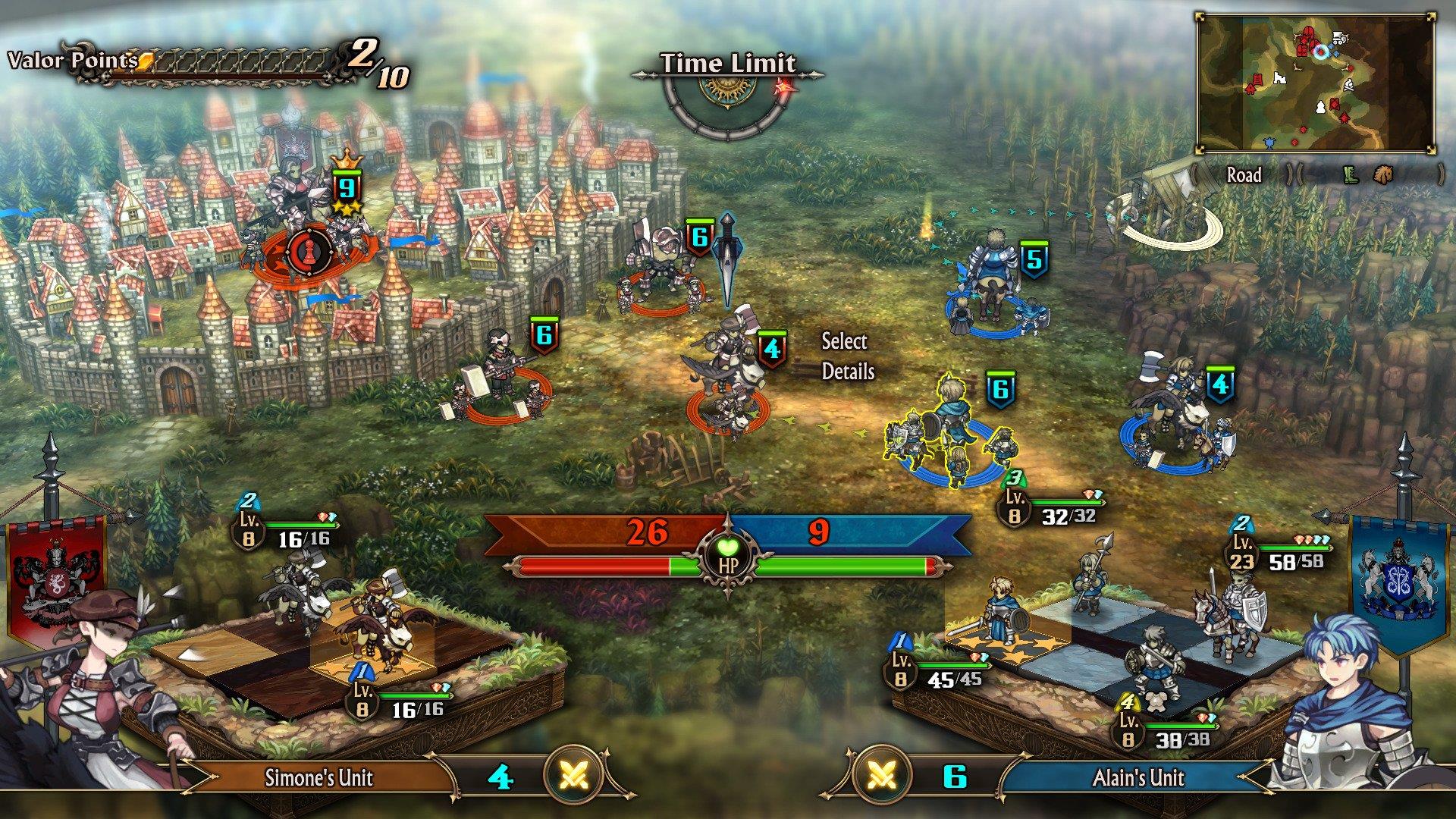
As players send out their units to fight in the field they can choose to select a single unit or even multiple units at once, sending them on the same pathway or even at “waypoints” that can help dictate their pathing a bit better. When the player’s unit comes into contact with an enemy unit they will be prompted with a pre-battle screen that already shows how the fight will go, indicating how much damage each side will take, including if one side might end up actually healing as a result of the conflict or be straight up slain in a single bout. If a few units are close together, players can swap which unit can enter the fray, helping pick and choose what unit might be better against the encountered enemy.
Once battle begins, players actually have no control over the way a fight will play out. Instead the characters in both units will automatically attack using their Active Points and Passive Points (AP) and (PP) to dish out damage, heal or buff their allies, and debuff the enemy. Players can choose to fast-forward this action if they want to speed things along and, especially in later missions that have massive amounts of enemy units and long encounters, players can choose to skip viewing a fight entirely and instead simply have the fight automatically complete with a press of the button. This can be a bit bewildering during some fights however, as players will often want to see how their units act during an encounter, especially difficult ones, and adjust their tactics if necessary.
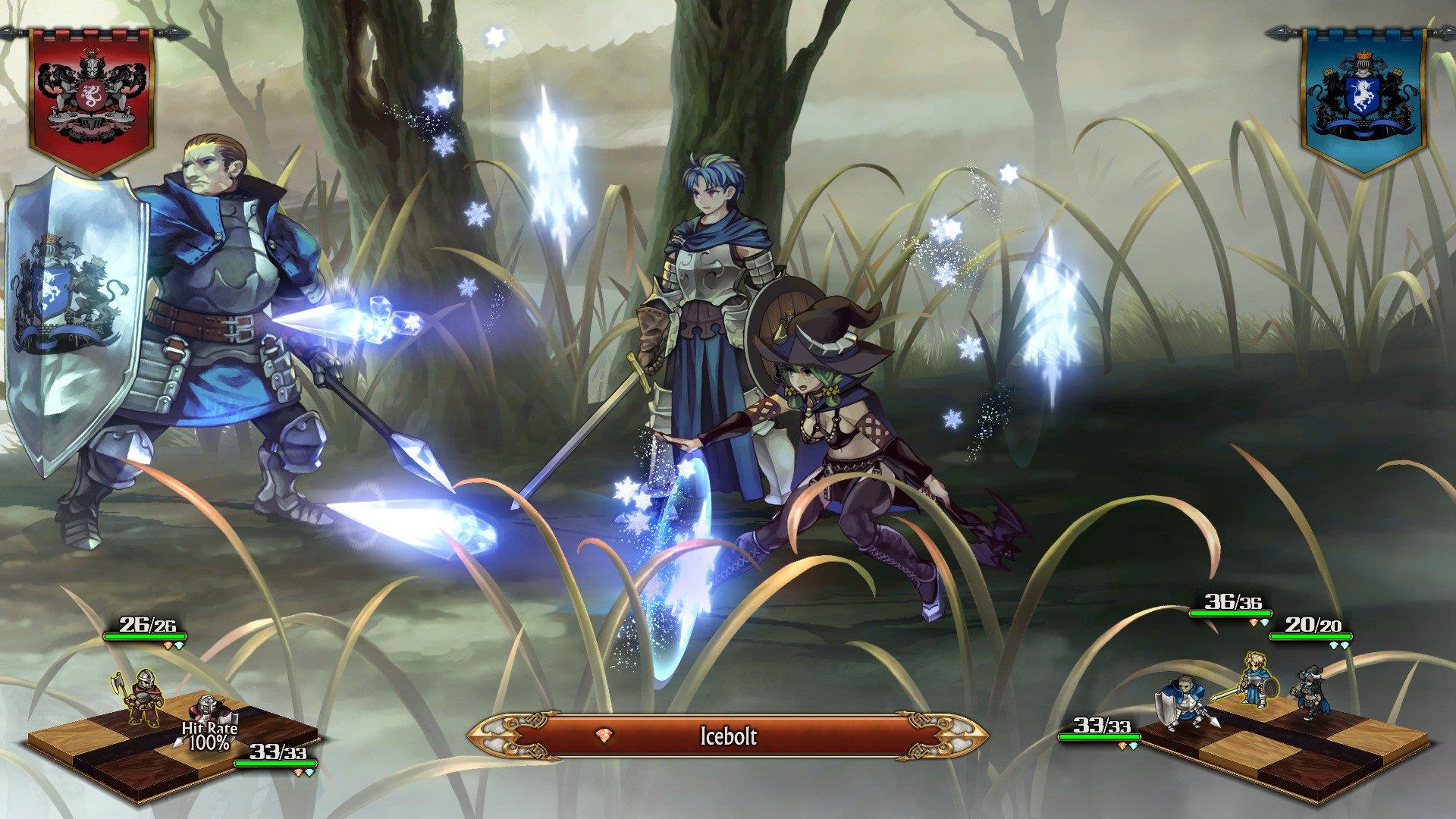
You see, as well as party composition and choosing which classes to stick in each unit, players can choose to micromanage their characters even further by modifying the types of tactics they will use in a fight. This can adjust how a character may take an action, such as having archer’s targeting the nimble dodging thieves or the weak to arrows flying units, or focusing on having clerics only heal allies that are below 50% health. Players may not need to focus too heavily on this level of micromanagement on normal but the fact that the option is there is nice, especially since it offers a massive amount of ways to build a unit. Players can craft a unit capable of dealing damage to nearly any type of foe, focus on having a leader that can fly over obstacles in the terrain and maneuver quickly, or even one that is specially designed to take out specific threats. This level of tactical depth and preparation is astounding and the fact that Unicorn Overlord offers that is truly special.
This doesn’t even touch upon the various pieces of equipment that players can purchase or obtain out in the world. Many pieces of equipment do more than simply add extra damage or defense, some provide the wearer with extra skills, giving players even more options to work with tactically should they choose. In fact, Unicorn Overlord specializes in a steady rollout of new content to constantly keep players enticed to keep going. This can be as simple as finding catapults and ballistas on a battlefield to aid allies to using skills at the cost of Valor Points to boost a team’s abilities or deal direct damage to enemies. New classes can unlock over forty hours into the game and give players new ways to fiddle with their units. It is also worth noting that since every class has their own strengths and weaknesses, building units to take advantage of these and positioning them on the battlefield properly can play a major role, especially in later fights that eventually see full five unit teams battling it out against other five unit teams. These are also generally the types of fights players will want to skip for the sake of time as well since they can often really drag on thanks to how many skills and actions each unit may have available to them at this point in the game.
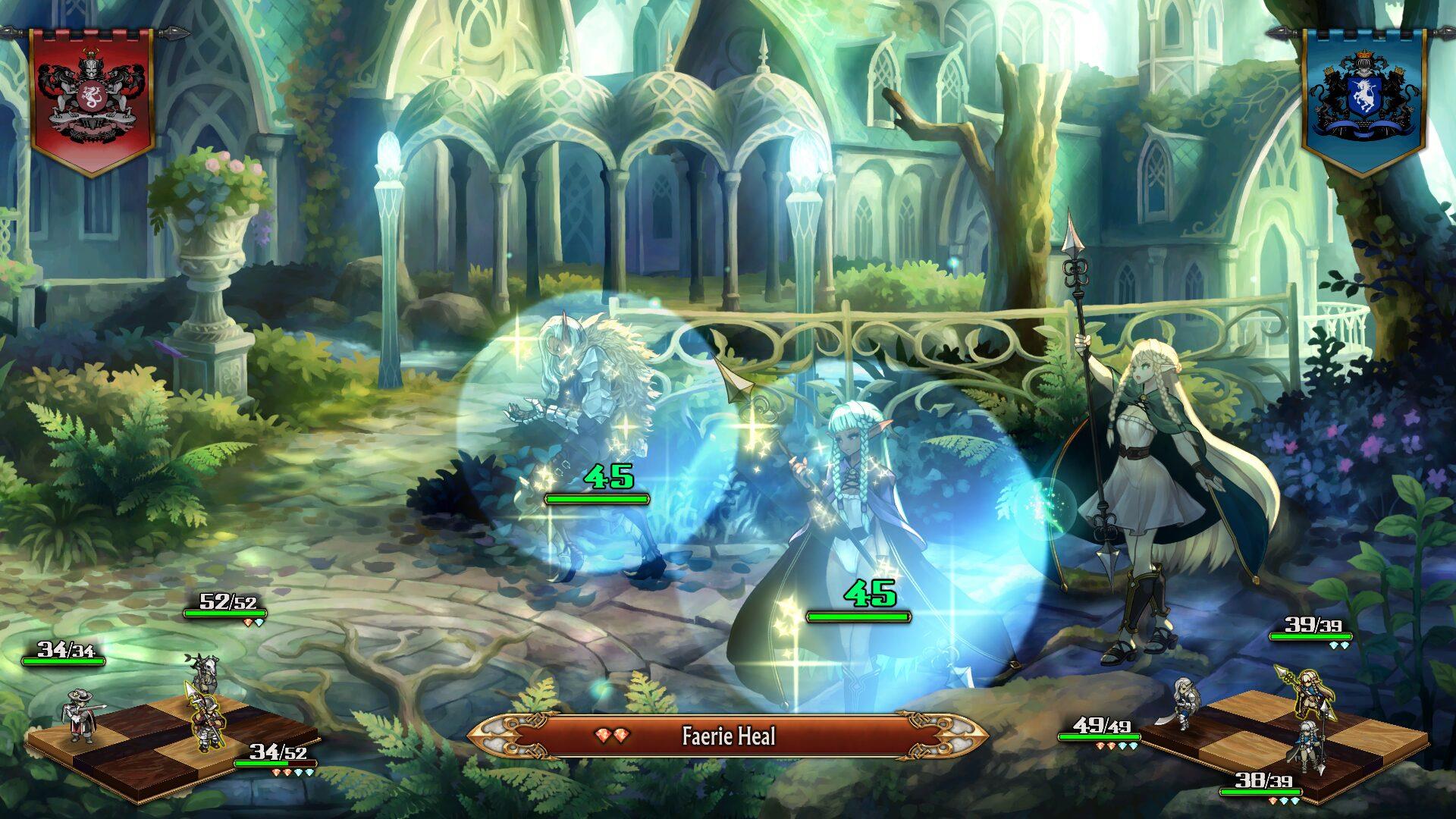
When not in combat players will travel through the overworld as a mini Alain that can visit towns, accept delivery missions to help restore towns to their former glory, often unlocking extra rewards in the process, find gathering points for items that can eventually be delivered, and even uncover various summoning signs, historical ruins, temples, and mines. Players can interact with their allies stationed at towns to give them gifts for increased bond points, take part in bond conversations that, when unlocked, are scattered around the map, and much more. It is worth noting that the game is not open world by any means as players are still set on a proper path and can often find ways blocked to them if they try to go anywhere they shouldn’t yet. Of course, exploring every nook and cranny is always rewarding, especially since some unique items are far off the beaten path and tucked away, making it feel like Unicorn Overlord always has something new to offer even at the endgame.
Audio & Visuals
Vanillaware has continued to use their excellent art style for Unicorn Overlord to make nearly everything in the game’s world look amazing. Every NPC, be it an enemy soldier or one of the over sixty different characters that players can have in their army (nevermind the customizable mercenaries) is incredibly detailed and many of them have some fantastic looking designs. The company isn’t afraid to let their fantasy designs run a bit wild either as many of the character designs include a variety of fantasy races as well as standard humans. The world design is varied between continents and there is some rather amazing looking food, also featuring the company’s signature art style, that players can obtain as well. Heck, even the menus have plenty of stylization to them, something that often goes untouched in most games.
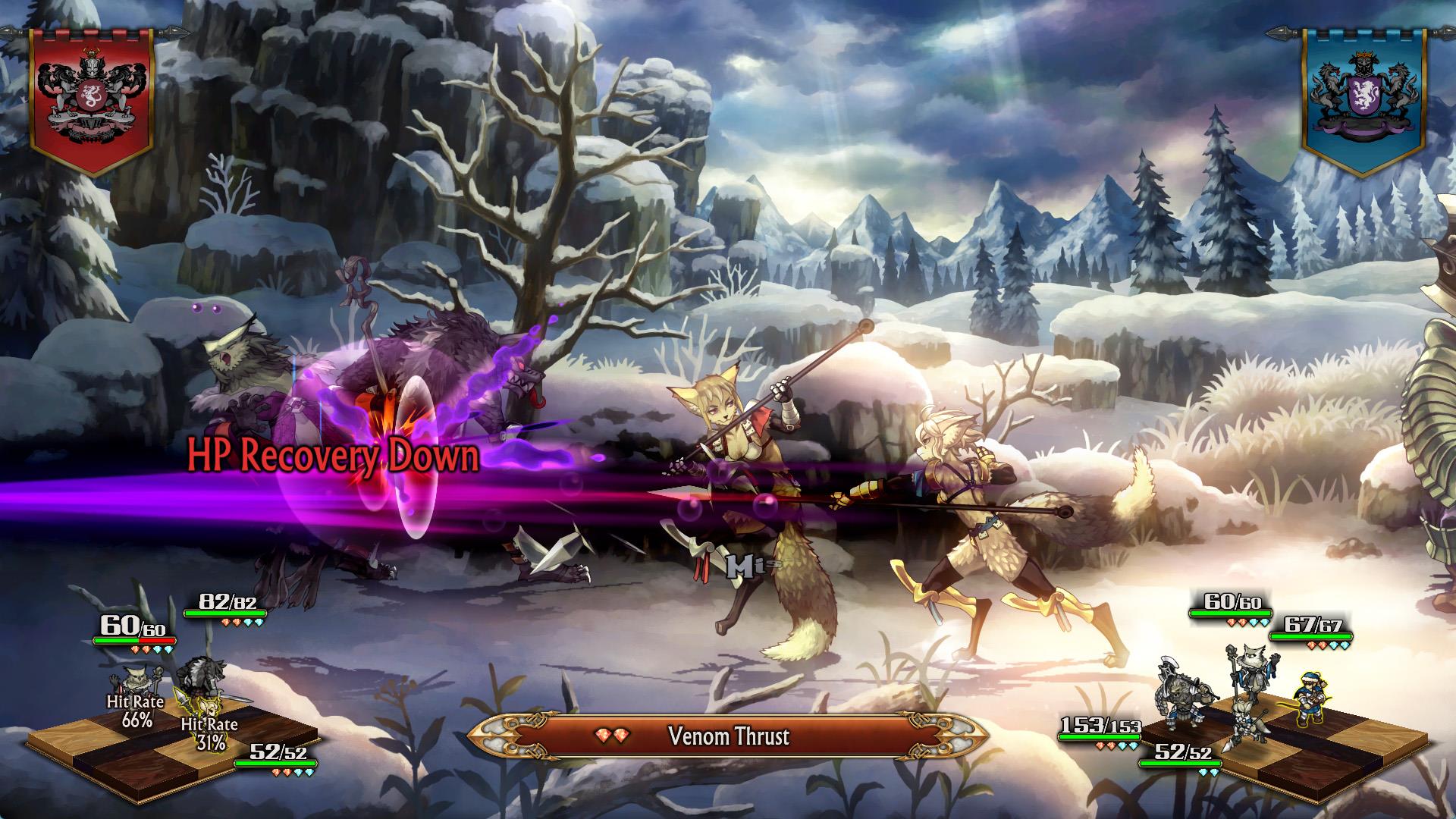
The voice work throughout Unicorn Overlord is handled quite well with players being able to choose freely from the English and Japanese English dub. The English cast is handled well, especially in regards to other races that players will encounter in other continents. The soundtrack features some outstanding sounding fantasy style music as well as a solid variety of combat music that works well during the lengthy combat sequences, which is something of a blessing considering how long later fights can become.
Overall
There’s something to be said about taking a rather mundane story about revenge with only a few twists and still managing to create an absolutely stellar game around it. Vanillaware has managed to do just that here with Unicorn Overlord as the game’s fairly simple story does little to drag down the fact that it’s massive collection of wonderful characters, even ones that don’t get much chance to shine, and its stellar combat system with endless customization options, make this strategy RPG unlike any other. Vanillaware’s signature style blends together perfectly with the medieval aesthetic and, combined with its truly outstanding gameplay, makes for an unforgettable game that anyone who even is tempted to try out a strategy game should give a chance.
Capsule Computers review guidelines can be found here.


